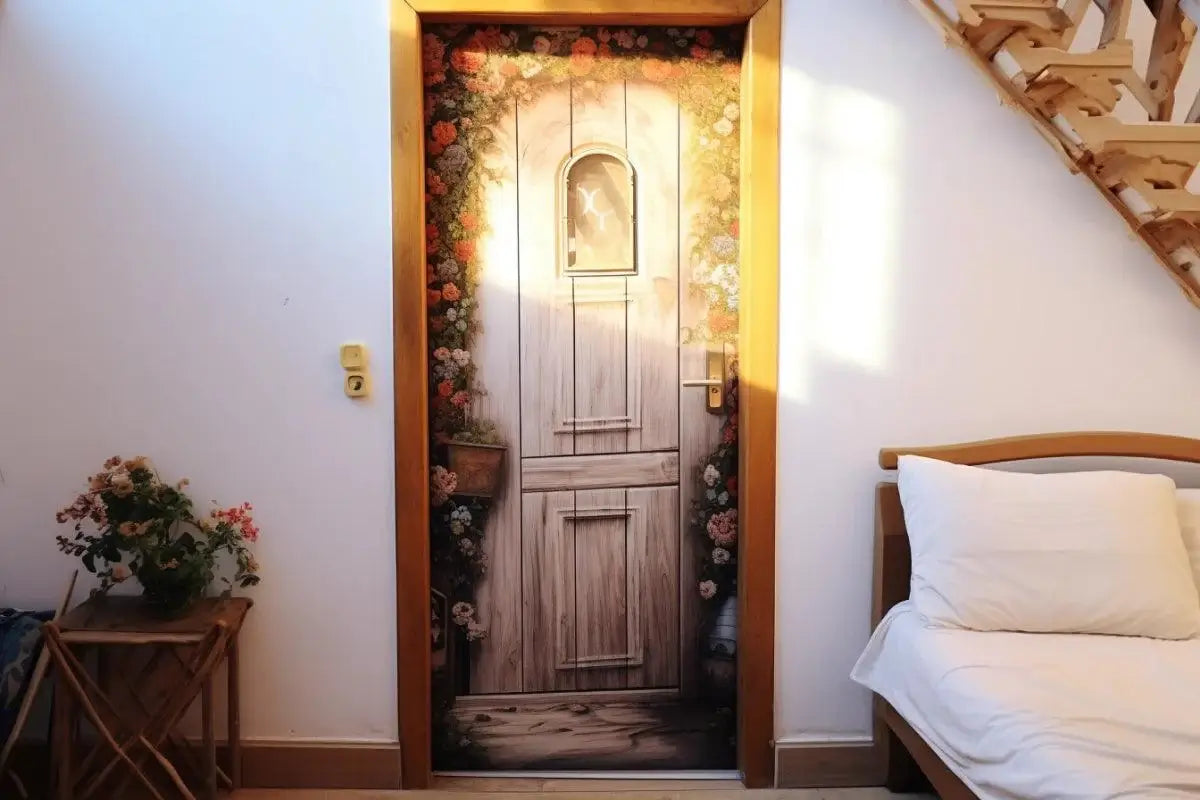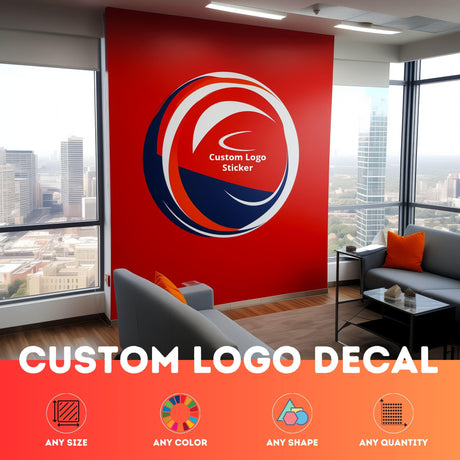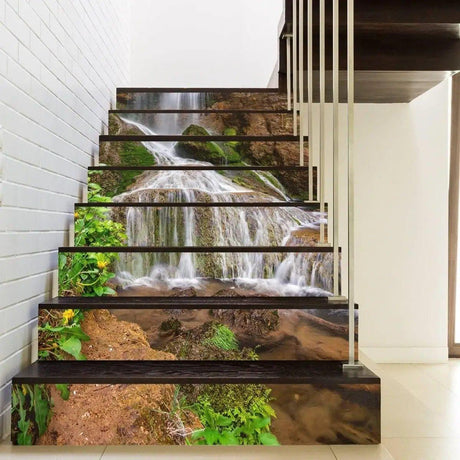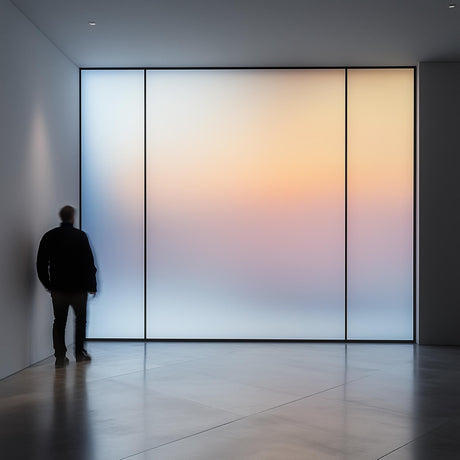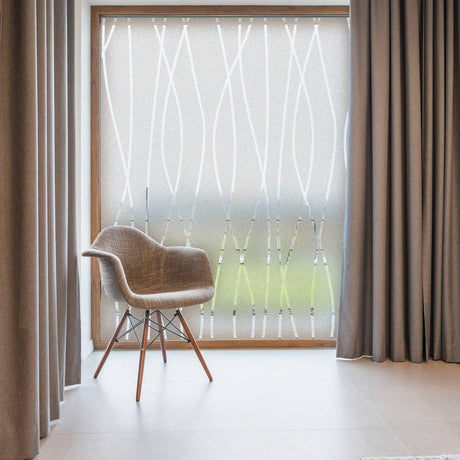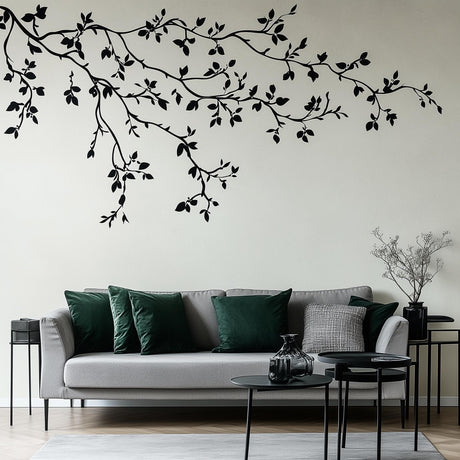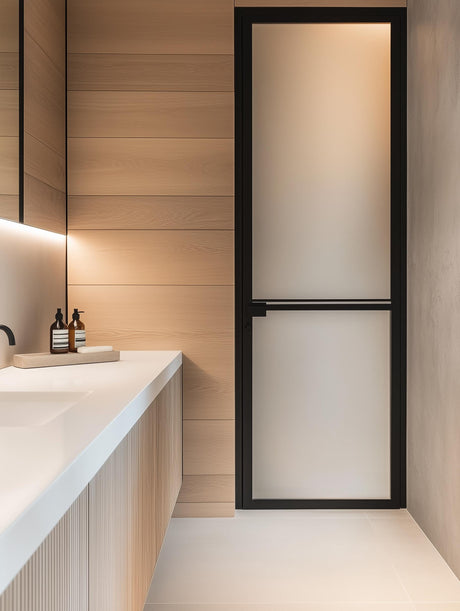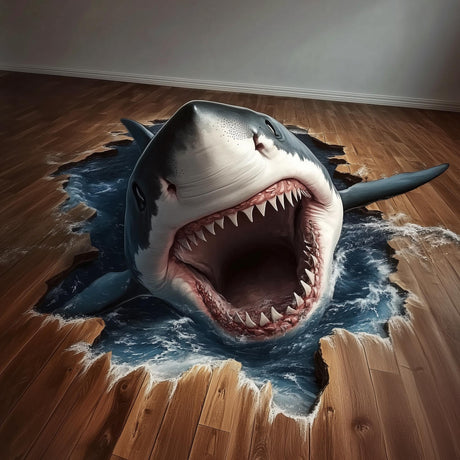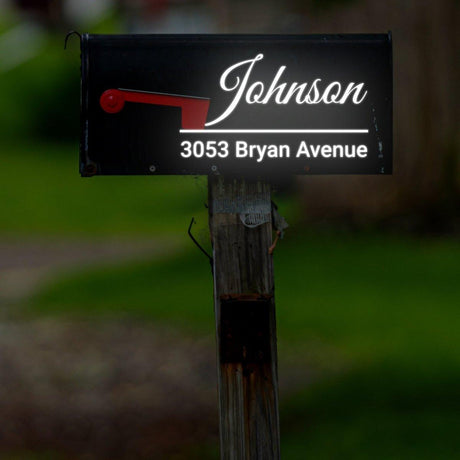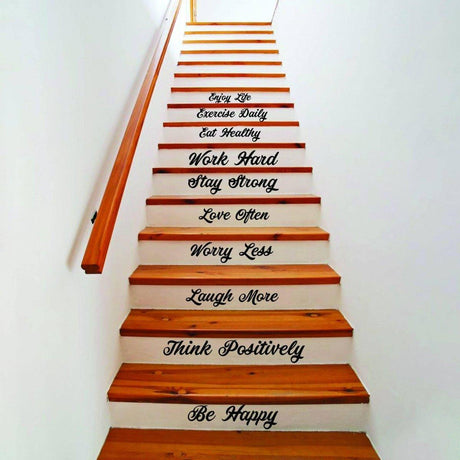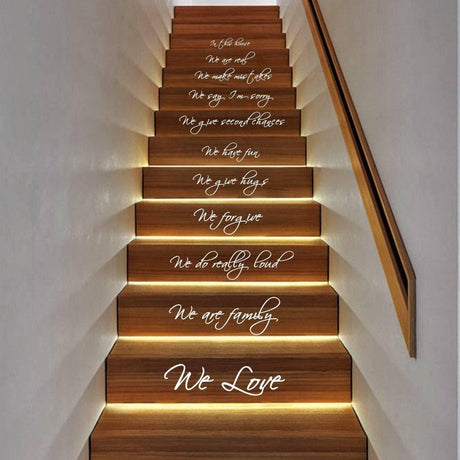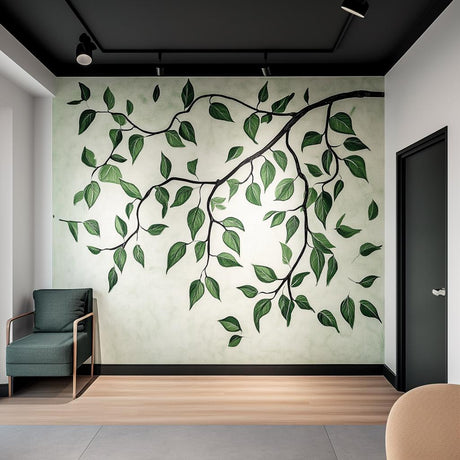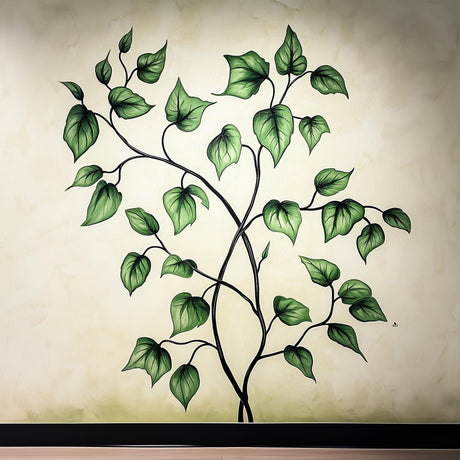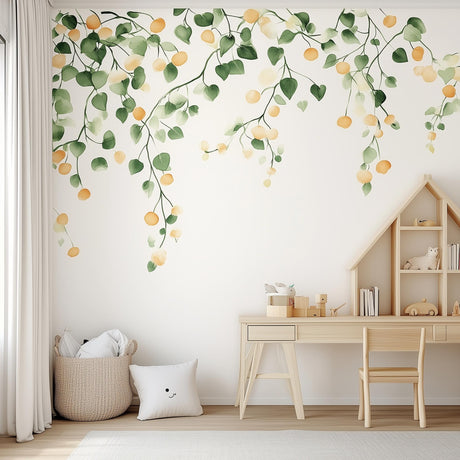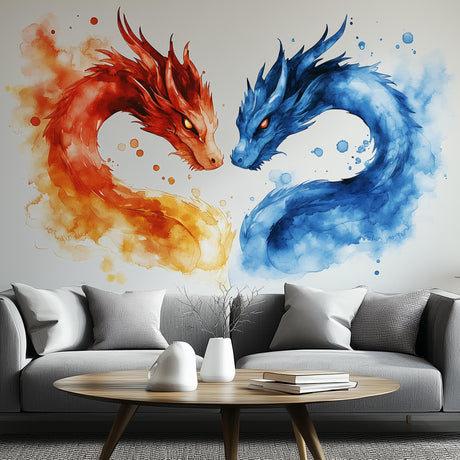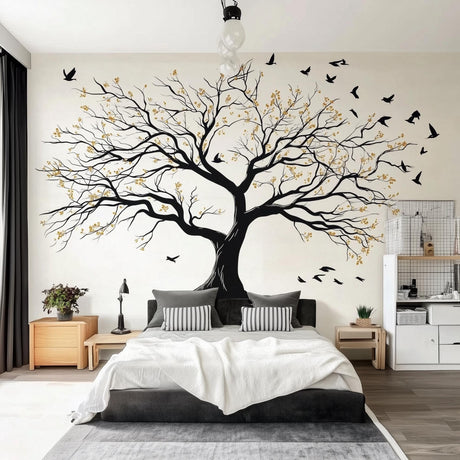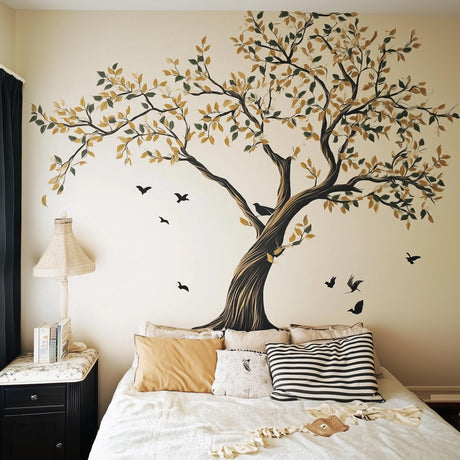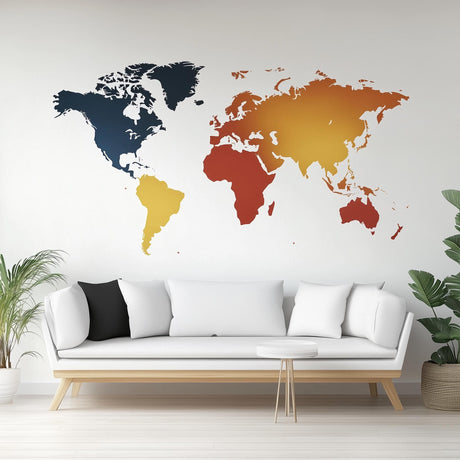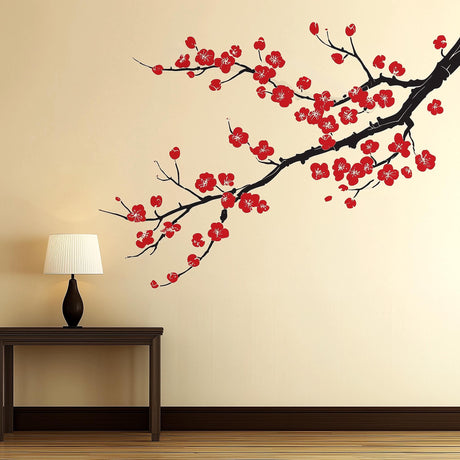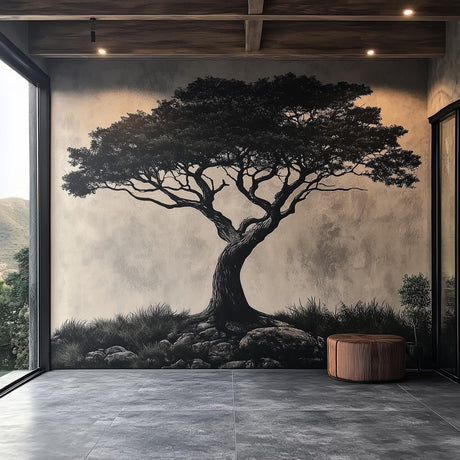The entryway is the first thing you see when you come home and the first thing guests notice. In many apartments and houses it is also the most problematic space: narrow, dark, full of shoes, coats, keys, and mail. You rarely have room for furniture or bulky decor, yet the hallway sets the tone for the entire home. Wall decals for entryway design solve this without drills, heavy shelves, or repainting.
Flat vinyl graphics sit directly on the wall, work with existing hooks and cabinets, and help you structure the space instead of filling it with objects. You can add visual order around the door, define a place for keys and bags, and still leave enough room to pass. Removable film is safe for rentals in the US and Europe, including older buildings in Estonia and Germany, where owners are careful about holes and paint damage. You get a welcoming entry zone that is easy to clean and easy to change.
How can wall decals for entryway improve a small or cluttered hallway?
Wall decals for entryway walls help when the hallway is too small for real furniture or already overloaded with storage. They work by giving the eye a clear structure: where you enter, where you hang a coat, where you put shoes, where the wall is simply calm. Instead of ten random objects fighting for attention, you see a few planned shapes and lines that tie everything together.
Most cluttered entryways suffer from the same issues. There is a pile of shoes on the floor, a mix of hangers on the wall, and maybe one small mirror that looks lost. When you place a vertical graphic behind the coat hooks, they stop looking like a random row of metal. When you add a simple frame decal around the mirror, it feels like a finished unit, not an afterthought. When you mark a small zone for keys and mail, these items stop migrating across the hallway.
Even in very narrow corridors, graphics can change the feeling of space. Vertical stripes or tall shapes make the ceiling feel higher. Horizontal bands at eye level can make the hallway feel wider when used carefully on one side. You do not add physical depth, but you guide how people read the space.
Entryways also carry a lot of emotional weight. This is the place where you take a breath after work or rush out in the morning. A simple welcoming phrase, subtle line art, or a calm graphic set can change how you experience that first step across the threshold. At the same time, flat decals do not block the path, do not catch dust like shelves, and do not interfere with opening doors.
When designed properly, the entry zone becomes a clear transition between street and home. You see where to put things, where to look in the mirror, where to hang a bag. The wall finally helps you, instead of just being a background for clutter.
What counts as large entryway wall decor when you cannot use bulky furniture?
Large entryway wall decor does not mean heavy objects. In a tight hallway, large decor means large visual impact with minimal depth. This is where oversized decals and compositions are more practical than console tables or big framed art. You get the scale and presence of a strong focal point without losing a centimeter of walking space.
A large graphic panel behind a bench can act like a virtual backrest. It visually grounds the bench and makes the area look intentional. A wide decal above a row of hooks can replace a shelf that you do not have room to install. In long hallways, a series of aligned shapes or an extra wide graphic breaks the tunnel effect and stops the wall from feeling endless.
The key is to think in planes, not in objects. Large entryway wall decor works best when it:
- occupies a clear rectangle or column on the wall
- ties together at least two physical elements, such as a mirror and a row of hooks
- is visible from the front door in one glance
- does not hide switches, thermostats, or intercoms
You can also use scaling to your advantage. One large graphic plus a few small accents feels calmer than many medium pieces. For example, place a big vertical shape near the door, then repeat one small symbol near the light switch and another near the shoe area. This gives the hallway rhythm without visual noise.
In homes with high ceilings, large decals help bring the room back to human scale. A tall pattern or big central motif at mid height lowers the visual center of the wall and makes the space feel more balanced. In low European halls, use wide but not too tall graphics to avoid pressing the ceiling down.
Because vinyl is removable, you can experiment freely. If you misjudge the scale or placement, you can adjust without calling a contractor, repainting, or patching drill holes.
How to plan entryway wall decals for zones, storage, and first impression?
A good entryway works like a small control center. You need a place to hang outerwear, drop keys, check your appearance, and maybe store parcels temporarily. Entryway wall decals can mark and structure these functions so people understand the layout instantly, even when visiting for the first time.
Start by mapping the main actions. Where do you stand when you put on shoes. Where do you take off your coat. Which wall do you face when you close the door behind you. These are the places where entryway wall decals make the most sense. The goal is to support movement, not to decorate randomly.
Many hallways can be broken down into three wall zones:
- the wall you see when you open the door
- the wall where coats and bags live
- the wall with the mirror or console
Each zone can have its own visual language. The first wall can carry a clean welcoming message or abstract art that sets the mood. The coat wall can use more structured graphics to define hooks and possibly a small bench. The mirror wall can have subtle framing decals that align the mirror, shelf, and any small art piece into one group.
Once you know the zones, choose decals according to function. For storage, look for shapes that can visually group objects: rectangles, bands, or grids behind hooks and shelves. For first impression, choose bolder designs that read from a distance. For transitions, such as corners or doorways, use small motifs that guide the eye along the path.
The best entryway wall decals also respect existing elements. They work around radiators, fuses, and intercoms instead of trying to hide them completely. This is especially relevant in older buildings in Estonia and Germany, where technical details often end up on hallway walls. With careful placement, you can frame these elements and integrate them into the composition, so they look less random.
In the end, planning decals for the entryway is closer to planning a floor plan than hanging art. You decide where actions happen, then let the graphics explain that layout to everyone who walks through the door.
How to install and maintain wall decals for entryway in US and European homes?
Entryways receive more physical contact than any other wall area. People brush past with bags and coats, children touch surfaces, and outdoor dust and moisture collect near the door. This means installation quality and maintenance matter more here than in a quiet bedroom.
Before applying any wall decals for entryway walls, clean the surface with a mild cleaner and let it dry completely. Remove dust, shoe marks, and any greasy traces near light switches or intercoms. If the wall was recently painted, wait until the paint is fully cured, not just dry to the touch. This reduces the risk of peeling paint during removal.
In US homes, entry walls are often drywall with a smooth finish. Most removable vinyl adheres well if the paint is stable. In European apartments with plaster or slightly textured surfaces, press the decal more carefully into the texture and avoid ultra thin lines that may lift at the edges. If you live in Estonia or Germany and your hallway wall is cold in winter, avoid placing the most delicate decals on external walls that collect condensation near the door.
For installation, follow a simple routine:
- test a small sample in an invisible spot
- mark the top and sides of the design with painter’s tape
- peel and stick from the center, smoothing outward as you go
- pay extra attention to edges and corners near door frames
- leave a few millimeters of distance from baseboards and trim
Cleaning is just as important. Wipe decals gently with a soft, slightly damp cloth. Avoid abrasive sponges and strong solvents. In a typical hallway, a quick wipe during regular cleaning is enough to keep the graphics fresh.
When you need to remove or replace entryway wall decals, warm them slightly with a hair dryer on low setting, then peel at a low angle. On good paint or well prepared plaster, adhesive should release cleanly. This matters for renters and for homeowners who may want to repaint or sell later. Done correctly, you can change the entire look of the entryway several times without any structural work.
Which styles of entryway wall decals work for rentals, family homes, and minimalist interiors?
Different homes need different entryway moods. A rental apartment in a busy city, a family house with children, and a minimalist loft all ask for their own approach to entry decor. The format is the same, but the scale, color, and complexity of entryway wall decals change.
For rentals, focus on neutral but characterful designs. Simple lines, soft shapes, and limited color palettes are easy to live with and unlikely to conflict with landlord rules or future tenants if you decide to leave the decals in place. If you plan to remove everything, choose sets that are clearly marked as removable and tested on your wall type.
For family homes, function comes first. You need graphics that can handle scuffs and frequent contact. Bolder patterns behind hooks and shoe racks hide fingerprints better than plain paint. You can use playful motifs to mark zones for children and adults, for example by changing shapes or colors at different heights. Entryway wall decals can also include simple icons that tell children where to put shoes, backpacks, or sports gear.
For minimalist interiors, less is more. A single vertical band next to the door, a narrow graphic above a bench, or a subtle pattern around the mirror may be enough. Here, any large entryway wall decor should match the architecture: align with door frames, follow existing lines, and avoid fighting the geometry of the space. The goal is to make the entry look intentional, not decorated.
Across all styles, think about how the hallway connects to the rest of the home. Colors and shapes from the entry can echo in the living room or kitchen decals you choose from Decords. This visual link helps the apartment feel like one continuous space rather than a set of separate boxes.
When you choose wisely, entryway wall decals become one of the highest impact changes you can make for the least effort. They welcome you home, help keep things in order, and protect your walls from random experiments with nails and tape.
Read less
